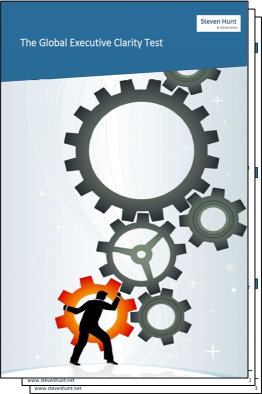Do you need to raise the speed and quality of collaboration in your company? The desired results are the best place to start.
When we’re feeling off the pace, we visit the doctor… with good reason. Symptoms can fit many illnesses. We trust the doctor to sort through the symptoms and identify the correct diagnosis. Doctors get it right, first-time in 85% to 90% of cases, according to the American Journal of Medicine. (To put this in context, self-diagnosis online with “Dr Google” gets it right in only 34% of cases. That’s a big difference.)
Doctors are experts at “outside-in” diagnosis. You arrive complaining about the pain in your knee (the outside symptom). The doctor works from this outside perspective inwards. After a short dialog, he diagnoses the cause of the pain – strained ligaments, tendonitis, arthritis, etc – and the course of treatment.
This outside-in diagnosis leads to better treatment and speeds up the healing process.
More global companies than ever are using the outside-in diagnosis
It’s noticeable just how many global companies are like the doctor.
Recently, a Senior VP in Finance asked for my support with cross-site collaboration. The CFO had given him a strategic initiative to integrate internal financial reporting across four countries (two in Europe, two in Asia). The project required a lot of information sharing between the sites. But this collaboration was painful and slow.
A decade ago, the Senior VP would have probably requested help via team or intercultural coaching. My response would have been the same as always, “Why?” Sometimes a Senior VP could answer that, often not.
But times have changed. There are a new generation of executives are the helm of global companies; the Senior VP in Finance is a great example.
When I asked the Senior VP, “Why?”, he said the speed and quality of the collaboration is too low. This has a knock-on effect on data quality in decision-making. Amongst other bad results, the sub-optimal decisions are leading to expensive mistakes and missed opportunities for the whole company.
The Senior VP hit the pain point: expensive mistakes and missed opportunities (caused by slow and low-quality collaboration). Like the doctor, his was an outside-in diagnosis.
Better diagnosis leads to better treatment
There is a clear trend now to working like the Senior VP. Start with the desired business results, then identify the most valuable actions for the company.
Above all, what this case shows is the real and growing divide between global executives. The best companies, like this Senior VP, have strong ambitions.
They set ambitious goals for all of their initiatives. They never give up easily in the face of defeat. For them, the worst failure is not defeat, it’s not trying to improve the business results.
In the end analysis, their tenacity, vulnerability, and ambition makes the difference. After all, why limp along with a bandage when you can sprint ahead?

















